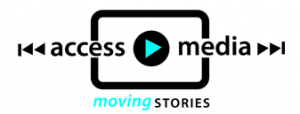Summary of organization/program
Access to Media Education Society (AMES) is a registered non-profit media production organization dedicated to helping people cultivate individual, group and mass communications skills. It is a grassroots community-driven organization.
Contact information
![]()
![]()
![]() 141 Sturdies Bay Road Galiano Island, BC Canada, V0N 1P0
141 Sturdies Bay Road Galiano Island, BC Canada, V0N 1P0
![]() 250.539.5904 [Deblekha Guin]
250.539.5904 [Deblekha Guin]
Geographic region
- Lower mainland
- Vancouver Island
Participants
- Marginalized youth and adults
History/Background Information
- Since: 1996
- Since they started in 1996, over 400 “multi-barriered” youth have created a total of 150 short films, videos, and public service announcements (PSAs) during our programs. These films have been broadcast on television, and appeared at film festivals and special screenings around the world. Some of these videos have even been become the center-pieces of a comprehensive series youth-created educational packages that are currently being used in classrooms across British Columbia.
- They’re films consistently win praise and awards for their distinctive vision; but for them the true reward is seeing how they inspire audiences, empower communities, and help create conditions for change.
Dominant Media Forms
video production
Objectives
- Meant to provide marginalized youth and adults the tools to learn about media production and actually produce media which focuses on issues of social justice and social exclusion.
Statement of Principles
not provided
Strategies
- A key belief: when dealing with marginalization, you should look to the margins. The message is strongest when those directly affected are given the chance to speak for themselves.
- AMES exists to empower people from groups that are marginalized, whether through ‘race’, gender, ethnicity, class, ability, and/or sexual orientation, by providing access to media training and technology in order that their perspectives might be heard and seen. All of our programs are participant-driven, and thus strive to include the various communities we serve.
-
AMES’ mission is to fulfil its Statement of Purpose by:-Providing broad-based and subsidized access to media training & technology-Collaborating with other organizations to design/deliver community-based media programming
-Promoting media literacy & ethically-responsible image production
-Providing hands-on opportunities for people to use video as a tool for education and self-advocacy-Circulating student productions within a range of public areasGuided by the evolving needs and interests of the organizations and individuals they serve, they have gradually developed two primary strains of programming:
Identity-Based and Issue-Based.
Identity-Based programming targets individuals from particular communities and provides them with basic media production training and a safe environment in which they can freely express themselves through video.– It is designed to give particular socially-excluded groups, the tools to express themselves through video. The realities and experiences of these communities tend to be either totally absent from the mainstream media or highly distorted.That’s why it’s so essential to give people from these communities the tools to represent themselves. Not only does this provide alternative media-makers with a much-deserved chance to have their stories and perspectives heard, but it gives those of us watching an opportunity to enhance our understanding, have negative stereotypes challenged and to be inspired. During these programs participants from around British Columbia are given an opportunity to escape the city, experience an action-packed week of instruction on Galiano island, live and work with award-winning filmmakers and get their hands on the latest in communications technology.
Issue-Based programming focuses on the production of issue-based videos for the express purpose of education, advocacy, and outreach. This type of programming, as seen in initiatives such as PEER PERSPECTIVES and SMOKE SCREEN targets both organizations and individuals.
These programs combine the key aspects of our commitment to media access and outreach, by focusing on the production of issue-based videos for the specific purpose of education and advocacy. These programs provide youth from marginalized communities with a safe environment in which they can reflect on issues of concern to them and get instruction from an accomplished group of peer mentors. Whether tackling issues of prejudice and discrimination, climate change or health, the videos made during these programs tap into and draw from the multiplicity of visions and experiences of people who have ‘been there’ and have dealt with these issues first hand. These videos have become part of a series of youth-created Resource packages that include custom-made activities, glossaries, and guidelines for generating safe and honest discussions in the classroom. These packages are currently being used in high schools throughout British Colombia. Youth facilitators are currently going into schools around the province, hosting screenings and leading discussions on the issues tackled in the various packages we have developed.
Samples of work
A video produced by youth in the AMES Smokescreen II Program:I-Quit
Spoofing popular ipod commercials, this ad satirically reveals the downside of smoking
and how ridiculous it is to view smoking as cool.
Funding Sources
Sponsors and community partners provide two different but vital roles in assisting their work. The generous sponsorship they receive from public and private organizations (local and national) ensures that they’re work and expands its scope; and the grassroots knowledge and support brought by our community partners and volunteers ensures that our programs properly address the needs of the groups they target.


![]()



